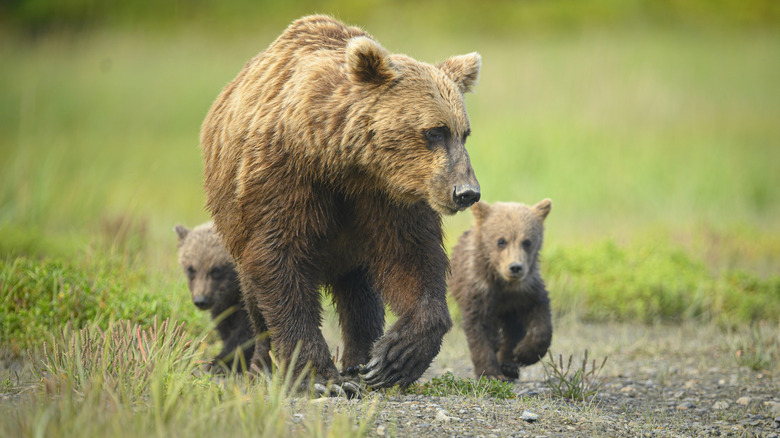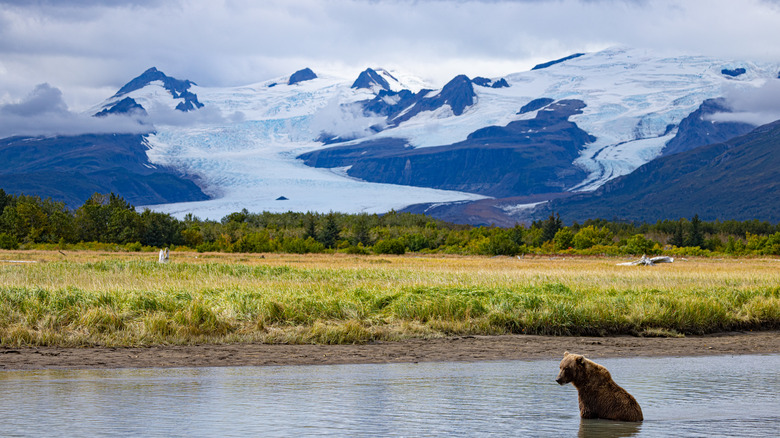Beware Of Bears While Hiking On One Of Alaska's Most Dangerous And Popular Trails
Anchorage is far and away the most populous city in Alaska. However, that certainly doesn't mean outdoor adventurers are free from the dangers of the Alaskan wilderness. The state that is aptly referred to as The Last Frontier, draws millions of visitors each year, most which are intent on spending as much time as possible outdoors. Of course, bears are synonymous with Alaska, as it has a greater population of grizzly bears than any other U.S. state. While backcountry adventurers are well aware of the risks involved and prepare for possible bear encounters, you also need to beware of bears while hiking on one of Alaska's most dangerous and popular trails, which just happens to be located in the state's largest city.
Far North Bicentennial Park is the largest park in Anchorage and draws over a million visitors annually. The park contains the popular Hilltop Ski Area, as well as the Alaskan Botanical Gardens. It is also home to over 100 miles of trails. According to Only in Alaska, one of those trails, Rover's Run, is among the top 10 most dangerous spots in Alaska. Although it was renamed Mellen's Way, this popular trail is still often referred to by its original name.
Changing the name did not, however, quell bear encounters. As a result of the frequency of hostile bear-human interaction, the trail was actually rerouted over a decade ago, moving a section that previously paralleled Campbell Creek. However, despite the rerouting, encounters continue and anyone looking to hike this trail should be well aware of the risks and take measures to protect themselves.
Staying safe while hiking Rover's Run
It is important to follow bear safety protocol anytime you are adventuring in Alaska. However, it is critically important when in a well-known area for bear encounters, such as Rover's Run Trail. Carrying and knowing how to use bear spray, such as SABRE Frontiersman or Counter Assault, should be considered a prerequisite for safety on this trail. It is also helpful to make noise to avoid bears while hiking, as startled or surprised animals are more likely to respond aggressively.
Before attempting this hike, you should also be aware of how to respond if you encounter a bear. To that end, it is important to know how to tell the difference between a grizzly and black bear. Both are found in the area and your response to an aggressive attack will be determined by the type of dangerous bear you are facing. Although both can range in color from brown to black, black bears tend to have a smaller head, higher rump, elongated ears, a conical nose, and no shoulder hump. Grizzlies have round ears, a muscular build, a pronounced shoulder hump, and a concave face.
If you happen to cross paths with a bear on the trail, the main thing is to remain calm and not run, regardless of the species you encounter. Speak in a calm tone, try to make yourself look as large as possible, and slowly begin moving away while maintaining eye contact. Should a bear make an aggressive charge, utilize your bear spray to deter it. If, however, you don't have spray or it doesn't stop the charge and you are attacked by a bear, the proper response could save your life. When attacked by a grizzly, you should play dead, laying on your stomach while covering your head and neck. If you are attacked by a black bear, you should fight back, using whatever you can grab as a weapon.

